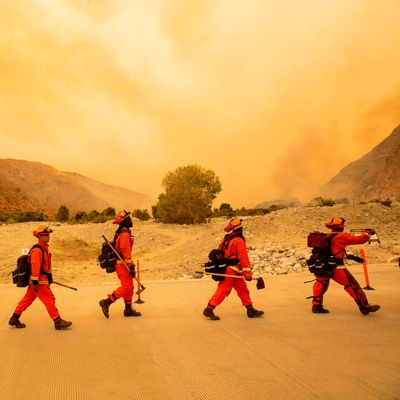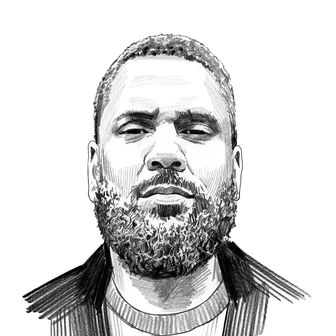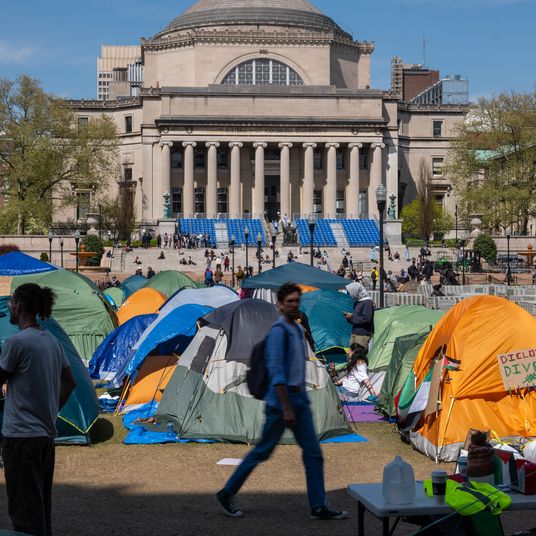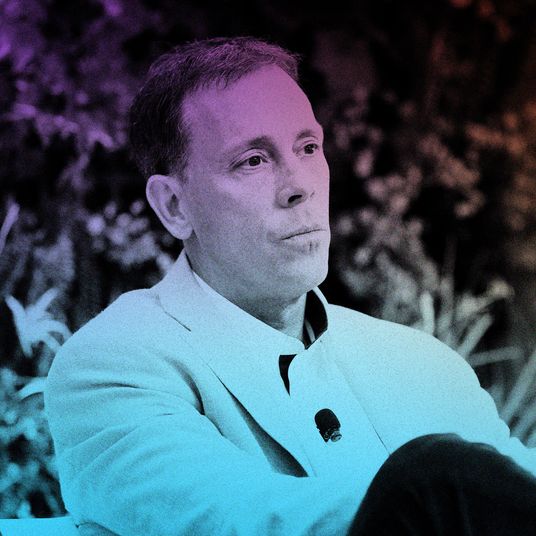
California has seen 625 wildfires start since last week, most of which are still burning, prompting more than 100,000 people to evacuate, killing at least seven, and engulfing 1.2 million acres in flames between Humboldt and Los Angeles counties. State prisoners who serve as volunteer firefighters typically play a small but important role in containing these blazes, mostly as “hand crews” — workers who try to slow wildfires by cutting swaths of barren land around their edges, depriving them of essential fuel. This year, there’s an unusually small number of these incarcerated firefighters available to help. Years of policies designed to shrink California’s bloated prison population have kept many would-be candidates from languishing behind bars altogether. The resulting shortage has made efforts to combat the current blazes especially difficult, state and local officials say. But it also means fewer people are subjected to the harrowing prison conditions that make fighting ravenous flames for a pittance so appealing in the first place.
This development marks the inevitable collision of California’s climate crisis with its prison crisis. Soaring global temperatures stemming from decades of humans pumping carbon into Earth’s atmosphere have contributed to abnormally hot and dry conditions for the Golden State, creating a tinderbox effect: The 10 biggest fires since officials started measuring them in 1932 have all occurred within the last two decades; the Camp Fire, which ravaged Butte County in November 2018, was the deadliest single blaze in California’s history, killing 86 people. The state’s rate of imprisonment has grown largely apace. Since the mid-1970s, stricter sentencing laws and a proliferation of “tough on crime” policies have caused an explosion in the incarcerated population, with reverberating effects. In 1976, there were around 20,000 people in California’s prisons, a rate of fewer than 100 per 100,000 residents. By 2006, the state’s peak, that population number had ballooned to upwards of 165,000 — more than 600 prisoners per 100,000 residents, a rate increase of close to 900 percent over four decades.
The result was not merely the subjection of unprecedented numbers of people to incarceration. It also entailed a degrading of the conditions in which they were kept, largely due to overcrowding. California is home to 33 prisons, 20 of which were built since 1984, when the state’s incarceration rate began a steep upward trend that continued into the late 1990s and only began to level out by the mid-aughts. But even this construction boom could not match voters’ and legislators’ zeal for locking people up. In 2006, the state’s prisons were operating at around 200 percent design capacity, with prisoners forced to sleep in gymnasiums and hallways to manage overflow. A series of subsequent court rulings — including a 2011 U.S. Supreme Court decision that found California prisons in violation of the Constitution — prompted mandated efforts to rectify the problem. They’ve found some success, relatively speaking. The state’s prison population has steadily declined over the past half-decade; by summer 2019, it had fallen to slightly below 137.5 percent design capacity — a still-horrifying figure that, nevertheless, speaks to the reductions made possible by downgrading some nonviolent offenses from felonies to misdemeanors and revising “three strikes” laws to carry lesser punishments, among other changes. (Nevertheless, that many would-be state prisoners have instead been rerouted into local jails as part of this process, euphemistically dubbed “realignment,” makes it impossible to fully applaud these developments.)
Then there are the fires. As they’ve grown deadlier and more widespread of late, the shrinking of California’s prison population has led to a 13 percent decrease in the state’s imprisoned firefighting corps since 2008. As of August 20, 1,300 prisoners had been deployed to fight the recent blazes — down from 3,500 in 2018 and 4,300 in 2016, according to KQED. Hundreds of others were set free in recent months to reduce the spread of COVID-19 in prisons, which have become viral hot spots. Governor Gavin Newsom has allocated millions of dollars to hire more seasonal firefighters to compensate. This has dampened the impact of the departures but hasn’t offset them. Thom Porter, director of the state’s fire protection agency Cal Fire, said during a July press conference that the group doesn’t “expect this season to make it to full capacity with inmate crews,” according to KQED.
This unique class of firefighters has existed in some form or other since the 1940s and remains a persistent subject of controversy. Cal Fire openly praises their contributions. Legal advocates describe them as exploited, an undeniable characterization once you review the figures: Program participants, who fall under the supervision of the state’s Conservation Camp Program, are typically paid $1 per hour when toiling on the front lines, and asked to work shifts known to stretch 72 hours. It is deadly and difficult work — and also gives prisoners a unique sense of purpose. “[We] took special pride in being able to actually save people’s homes,” Ricardo Martin, who worked as a firefighter when he was incarcerated, told the New York Times recently. “Everybody talked about that and how good they felt about it.” But this sense of pride is less a testament to the program’s merits than an indictment of its dismal alternatives. Prison is torture, and the same rigid approach to sentencing that caused California’s to burst at the seams has kept people locked up for progressively longer stretches of time and with fewer options for earning early release.
One result is a population primed to grasp at any activity that offers reprieve. And one of their few options entails risking life and limb fighting wildfires for little pay. Although the Conservation Camp Program does earn some prisoners credit toward shortened sentences, it is almost never a path to employment upon release: A felony conviction prohibits formerly incarcerated people from getting certified as emergency medical technicians in California. This functionally bars them from being hired by any local firefighting agency. Efforts to change this rule are thwarted regularly by fearful lawmakers, egged on by fearmongering police and firefighter union representatives. “If I come into your house at 2 in the morning … and your 21-year-old daughter is sitting there with just her underwear and a bra on complaining of abdominal pain and other stuff like that … when I’m trusted to do my patient assessment, you are trusting me as an individual to not do anything inappropriate to her at that point in time,” Tim Edwards, president of Cal Fire Local 2881, the union representing the state agency’s firefighters, told the Sacramento Bee in July.
That this scenario remains entirely a matter of cynical conjecture has done nothing to dull its potency. But the bleak post-prison outlook for incarcerated firefighters is slightly diminished by the fact that fewer of them exist today. The 2020 shortage of prison labor is a result of there being fewer prisoners. Broadly speaking, it’s a step toward the reality that California should aspire to and that it has consistently failed to realize. Options abound for how to rectify the consequent staffing deficit. It is possible to include firefighting as part of a slate of fair and gainful employment options available to convicted people, and offer it to more of them, even as California invests more in its non-incarcerated firefighting infrastructure. But as things stand today, no such program exists, with the effect of maintaining an especially deprived category of exploited American worker. It’s a fitting analog to the climate crisis fueling the fires that human fecklessness is behind this reduced capacity to fight them as well.






























